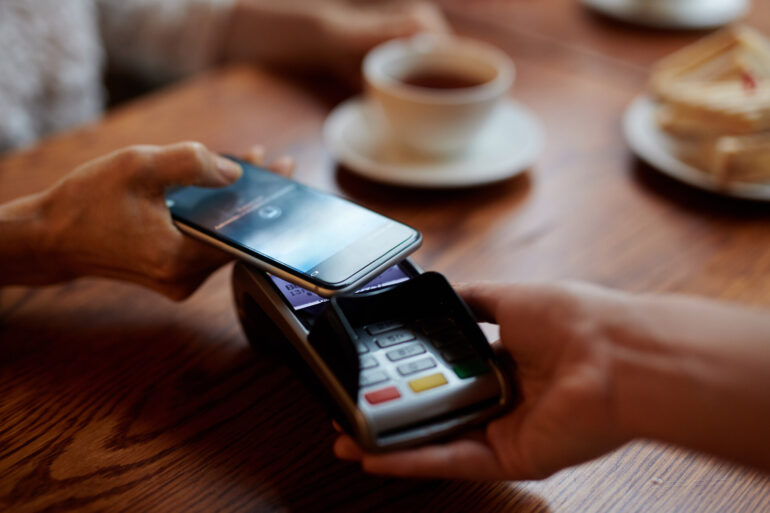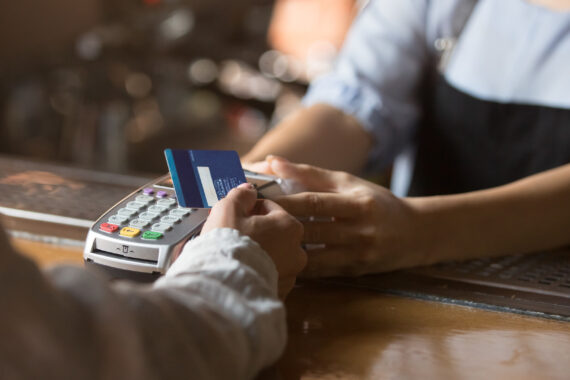The world of merchants revolves around customers, and the final goal of any business owner is to meet the needs of their clients. This includes all payment options people may find convenient, including paying with their mobile phones. But first things first, you’ll need to understand what is a mobile payment, how it works, and how it can benefit your business.
What is Mobile Payment?
Mobile payments are modern types of payments that use portable devices such as smartphones and tablets. This technology allows quick and convenient transactions, whether it’s buying products, settling bills, or sending money to friends and family through apps such as PayPal and Venmo. Mobile payments can be handled with various tools, including digital wallets, mobile browsers, or specific mobile menus. It’s a versatile option for any type of digital transaction.
Mobile payments are part of a bigger group called mobile financial services. This includes payments, banking, getting insurance, borrowing money, and investing, with some people now also using digital currencies like Bitcoin for these. You can use this type of money transaction to send money to a friend (P2P), buy something from a store (C2B), get paid by a company (B2C), or even when businesses pay each other (B2B).
The Rise of Digital Wallets Globally
According to reports, digital wallets were responsible for nearly half (48.6%) of the total value of global e-commerce transactions in 2021, amounting to more than $2.6 trillion. This figure is expected to increase further – to 52.5% by 2025. Additionally, e-commerce is predicted to represent 12% of all global consumer spending by 2025, with mobile devices handling 59% of these online transactions.
The use of digital wallets is also on the rise for payments at physical stores (point-of-sale or POS). In 2021, digital wallets accounted for 29% of all POS transactions, a number that is anticipated to grow to 39% by 2025. Meanwhile, cash payments are expected to decrease, and drop from 18% of transaction value in 2021 to just 10% by 2025.
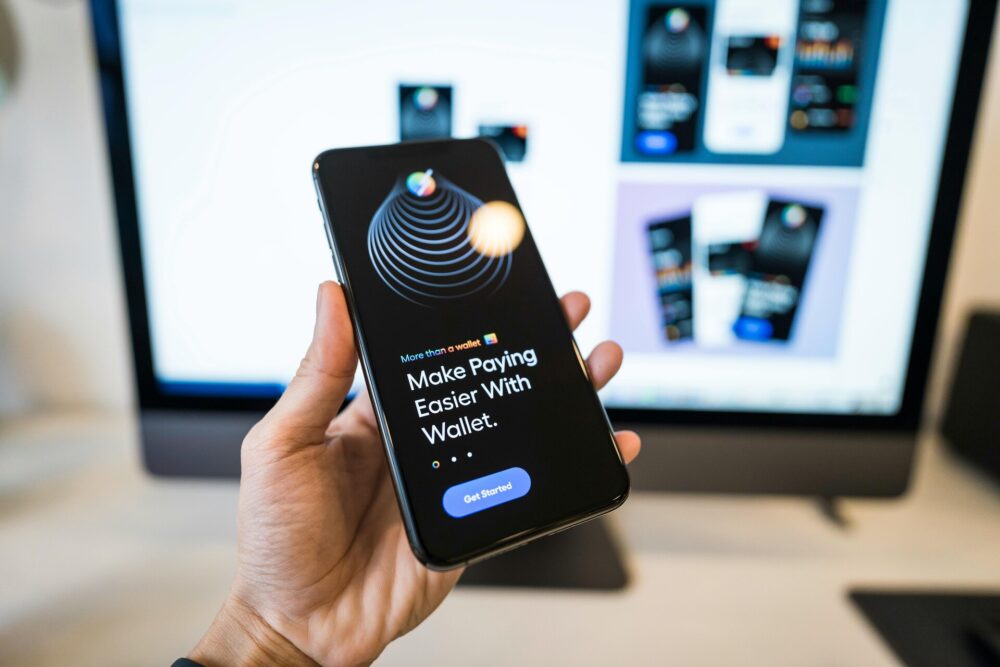
Exploring Different Types of Mobile Transactions
In essence, the emergence of mobile payments is revolutionizing the way we handle transactions. It brings a new variety of methods to transfer money from one account to another, with little to no effort. People can pay using their smartphones or tablets in different ways, like through specialized apps. These apps are designed for the following:
- Storing money digitally (like Apple Pay and Google Pay)
- To let you send money directly to others (like Venmo, CashApp, Zelle, and PayPal)
- Some even allow transactions through text messaging,
- Some will allow you to pay directly through credit card virtual terminals on mobile e-commerce sites or using quick checkout options like Shop Pay,
- Finally, you can also make mobile payments at point-of-sale terminals in stores, using a device to tap and pay instead of using cash or physical cards.
Let’s explore these five types of mobile payments in depth.
Mobile Wallets
Mobile wallets, including Google Pay, Apple Pay, and Samsung Pay, are a convenient method for placing transactions. When a customer uses these services from their smartwatches, tablets, smartphones, and more, they transform their devices into payment tools. They do so by linking these devices to a card or an account. After setting up a mobile wallet, a customer can use the device to make contactless payments in stores equipped with NFC technology.
Online shopping is also made easier with mobile wallets, as many e-commerce sites allow clients to pay by selecting the mobile wallet option at checkout. Shopify’s Shop Pay, an accelerated checkout service, stores customer information to enable easier and faster transactions in the future.
Mobile E-commerce Payments
Mobile e-commerce or m-commerce, covers transactions done through a mobile device’s browser or a merchant’s app. This method includes using cards, wallets, or fast-checkout services for online purchases. Here is where the new trend of shopping on the go is most visible because consumers expect seamless payment processes on their mobile devices.
Mobile Peer-to-Peer (P2P) Payments
Mobile P2P payments allow the direct transfer of funds between individuals through different apps. They are, however, not limited to personal use. Businesses, especially small retailers, started accepting payments through platforms like PayPal. This is an example of a smooth integration of merchant services and credit card processing services into their operations.
SMS Payments
Another simple way to handle payments is a solution called SMS payments, where a user can transact by simply sending a text message to a specific number. Though not as common in smartphone-dominated regions like the United States, SMS payments are popular in certain parts of the developing world. This solution offers a trustworthy method for transactions without the need for internet connectivity.
Mobile Payments at Point-of-Sale
Mobile point-of-sale (mPOS) systems enable customers to use their mobile devices or credit cards for contactless payments on portable payment terminals, such as tablets. These systems are designed to process payments efficiently, transmit data to financial institutions, and ensure the secure transfer of funds. Merchant services and credit card processing are at the center of this process, and they enable a merchant to accept mobile payments while in retail settings. Shopify’s POS Go is an example of an mPOS that allows merchants to conduct transactions anywhere in the store or even on the curbside.
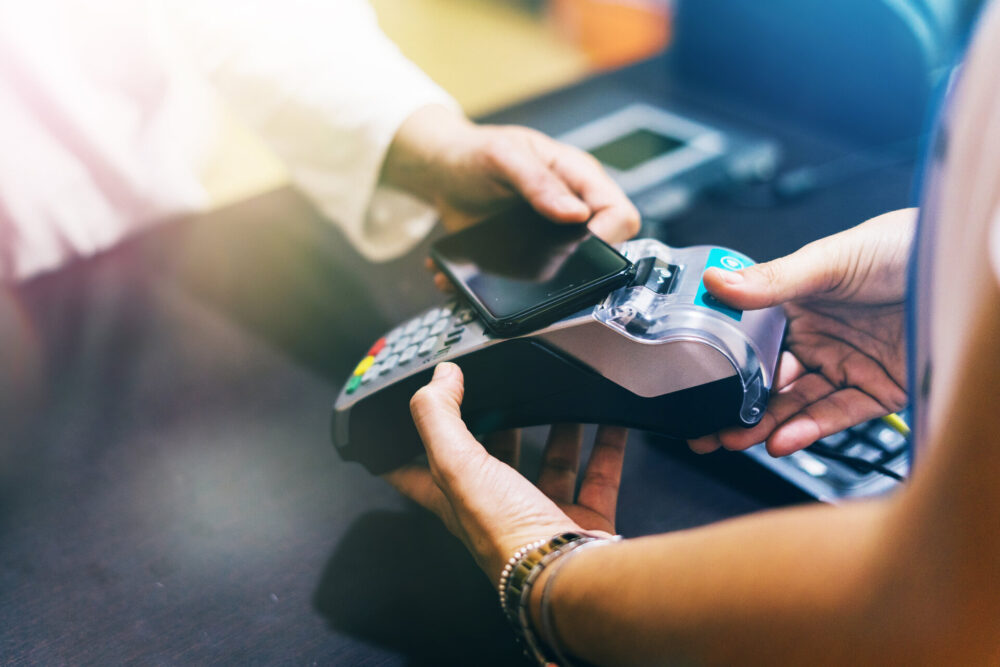
How Does Mobile Payment Work?
Mobile payment works by allowing you to use a smartphone, tablet, or any other device to process transactions for goods and services. People can use this as an alternative to using cash, checks, or credit cards at a point-of-sale terminal. However, if customers want to use this as an option to make purchases, they need to cover several key components and steps.
Digital Wallet Setup
First, a customer needs to choose an app or service and install it on the device. The next typical step is to link the digital wallet to a bank account, credit card, or debit card for funding transactions.
Tokenization for Security
Once the card has been added to the app, the app itself generates a unique, encrypted code, or “token,” that represents the card information. This token will then be used during transactions instead of the actual card number, and this process keeps the financial details secure and minimizes the risk of fraud.
Making a Payment
In order to make a purchase with this option at a store, a customer only needs to hold the device near a terminal that supports contactless payments (it usually has the NFC or contactless symbol). The payment terminal communicates with the mobile device using Near Field Communication (NFC) technology, which enables the transaction. For online or in-app purchases, a customer will need to select the mobile wallet option at checkout. They will also need to authenticate the purchase using a PIN, fingerprint, or facial recognition, depending on the device’s security features.
Transaction Processing
Next, the terminal or online merchant will send the transaction details, including the tokenized card information, to the merchant’s bank (acquirer). The transaction is then forwarded to the card network (Visa, MasterCard, and similar) and on to the bank that issued the card (issuer) for authorization. In the event that the transaction is authorized, the issuer completes the purchase by sending an authorization back to the merchant via the chain.
Settlement Between Parties
After the transaction is authorized, the payment is processed, and funds are transferred from the customer’s bank account or charged to their credit card. The merchant then receives the funds minus any transaction fees charged by the credit card processing companies.
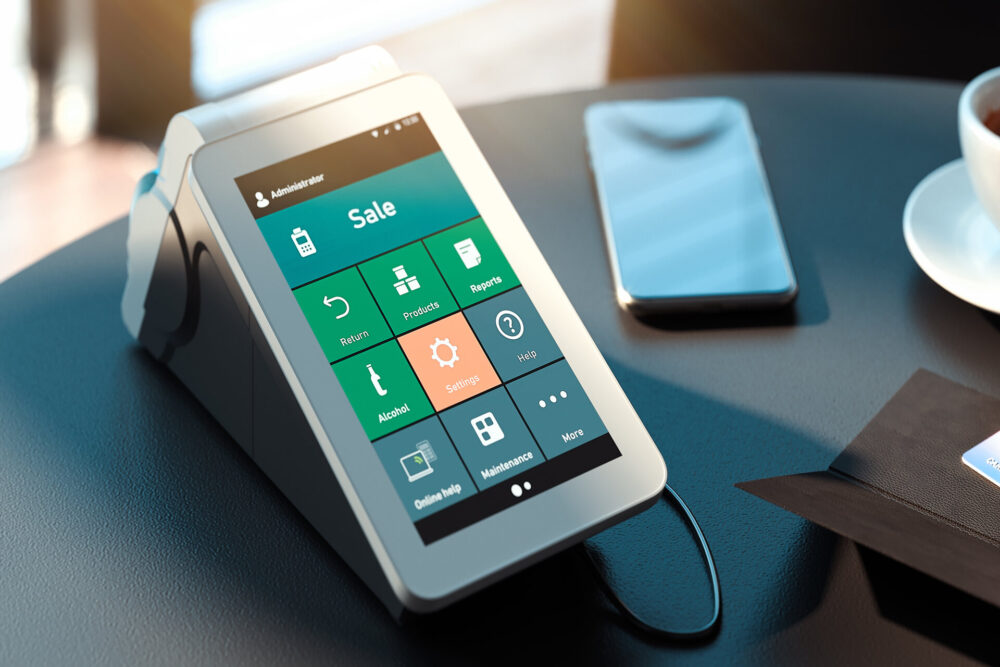
Advantages of Mobile Payment Solutions
Accepting mobile payments, whether through online transactions, contactless methods at physical stores, or via popular apps, offers merchants some significant benefits while also being convenient for customers. Besides convenience, some of the key advantages include enhanced security and speed.
Convenience for Customers
Mobile payments simplify the checkout process, and they provide a smoother and faster way for buyers to make their purchases. With just a tap of their phone or credit card at a point-of-sale terminal or a few clicks on an e-commerce website, customers can complete transactions without the need for cash or entering card details manually.
Enhanced Security
One of the most important features of mobile payments is their security. Mobile devices typically require authentication (such as a fingerprint, facial recognition, or passcode) before a transaction can be authorized. This only adds another layer of protection to a secure transaction. Additionally, these payments involve encrypted data transmission, which makes it difficult for unauthorized parties looking to intercept sensitive information. Certain services offer additional security measures, including free fraud protection on eligible orders through their platform.
Speedy Transactions
What’s even more convenient is that the processing speed of mobile payments is on par with, or perhaps even faster than, traditional credit card transactions. This efficiency is due to the advanced technology used by financial institutions to process these payments instantly. For merchants, this means reduced wait times and improved customer satisfaction with a smooth checkout process.
Growing Popularity
The use of mobile payments is on the rise globally, with projections suggesting that consumers will spend $6,007 billion annually by 2027 through mobile payment platforms. This trend indicates a shift in consumer behavior, with a preference for convenience and security on the rise. This convenience and security are offered by mobile payment solutions. It also allows businesses to meet current customer expectations and, through it, capitalize on the growing trend. In the end, it leads to an increased customer base and growing revenue.
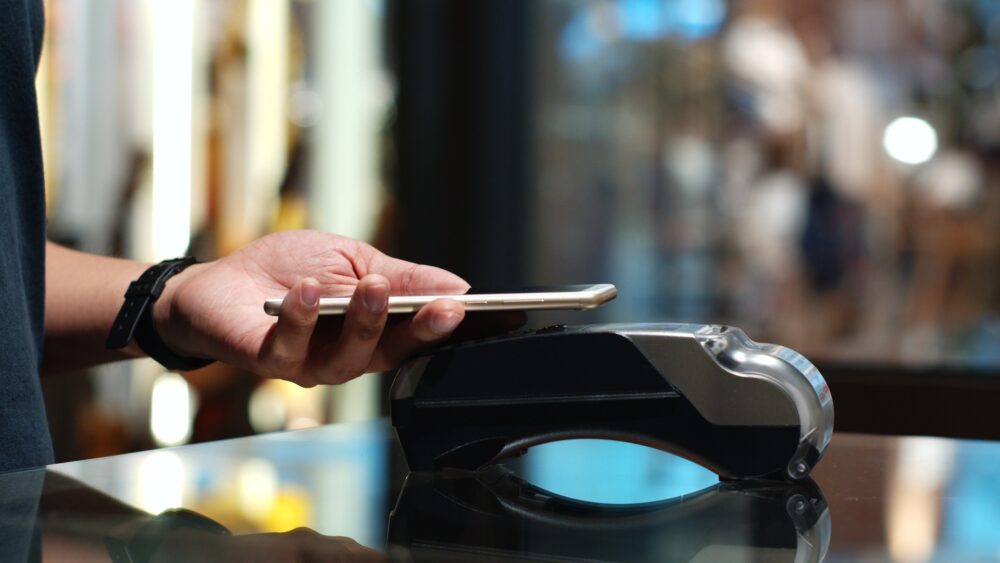
Embrace the Future of Payments With Merchant Chimp
Merchants should keep in mind that adopting mobile payment methods will bring a lot of benefits to their business. As consumer preferences continue to evolve towards digital and contactless payments, businesses that embrace these technologies are only expected to thrive further.
If you need a credit card processing company by your side so you can simplify your processes and offer customers the ease and security of mobile payments, Merchant Chimp is here to help. Our user-friendly merchant solutions are designed to simplify the way you do business, and we can make it more efficient and profitable. With us, you can focus on growing your enterprise while we handle the complexities of payment processing. From our Discount program to other convenient solutions, we truly understand your needs. Get in touch with us today and discover how much you can achieve with Merchant Chimp as a partner.

